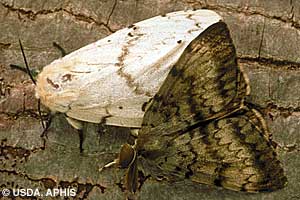This summer, Minnesota’s North Shore of Lake Superior will again be the front-line in the battle between agriculture officials and the exotic invasive insects known as the gypsy moth.

The Duluth News Tribune covers the story HERE.
Minnesota Department of Agriculture officials are planning a two-pronged aerial attack against the European-originated, leaf-eating invaders which are continuing their century-long spread west across the United States. Minnesota’s first gypsy moth in caterpillar form was found last summer in Duluth, confirming that the exotic pest, which can defoliate wide swaths of forest, is reproducing in Minnesota.
This June, airplanes will spray Bacillus Thuringiensis Kurstaki, a soil bacterium, on areas with large populations of the insect. BTK kills gypsy moth caterpillars. In July, synthetic hormone flakes will be dropped over a broader area of the North Shore to confuse male moths so they can’t mate and expand the population.
Officials caution that the battle will likely be lost to the invaders in the end. They hope, however, to slow the advance of the pest.
Imported from Europe in the 1860s, gypsy moths are voracious eaters that can defoliate entire trees. Oaks and aspens are especially susceptible to the insect which has few North American predators. Repeated defoliation of trees by the pests can lead to the death of the tree.
Learn more about the state’s gypsy moth efforts HERE.

